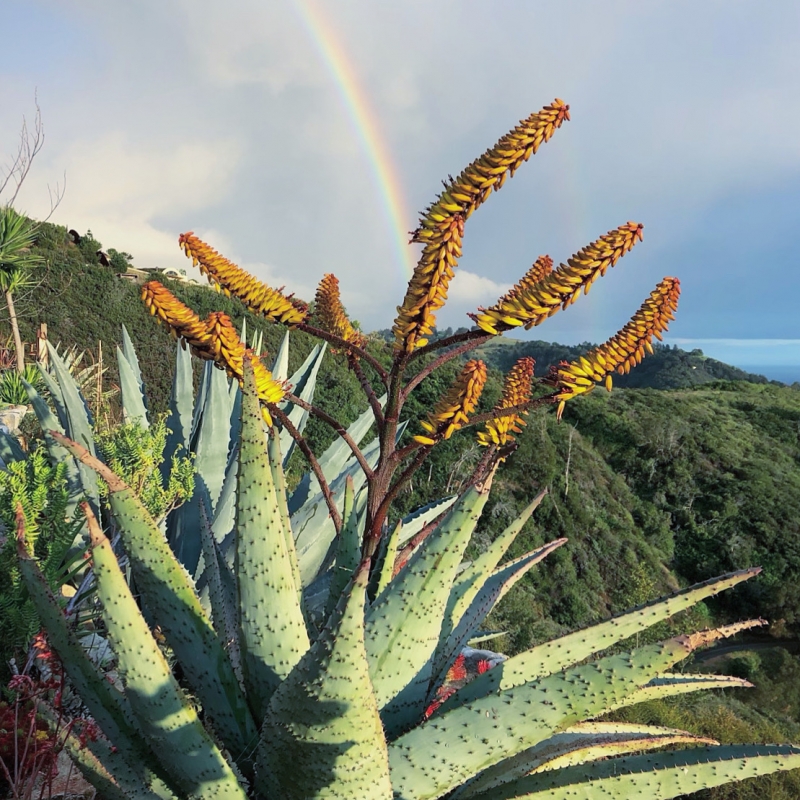

| height | 4–10ft | |
| width | 3–6ft | |
| tolerates | Drought, Deer , Gophers, Heat, Pots, Rooftops, Neglect, Wind | |
| water needs |
Low | |
| water info |
Aloes thrive on neglect, making them one of the easiest garden plants for California. They are drought-tolerant, and this one will not need additional water once established in the coastal garden. Most aloes will be plump with many bright vibrant blue or green leaves during their growth season. It’s natural for these same plants to show stress during their dry season, often turning shades of red, orange or brown, giving added seasonal interest to the succulent garden. During this time the leaves will curl in on themselves, and often shrivel up and shed from the base. If you prefer a lush look, watering once dry will keep them plump. Avoid overhead watering in the crown; when water collects there, it may lead to crown rot. |
|
| hardy to |
20F | |
| exposure | Part Sun – Full Sun | |
| indoor outdoor |
Outdoor | |
| drainage | In Ground: Cactus Mix, In Pots: Cactus Mix, Tolerates Sandy Soil | |
| fertilizing | All Purpose 1/2 Strength, Low Needs | |
| origin | SC Africa | |
| california native |
No | |
| sunset zones |
8, 9, 12–23 |
Full Sun
Six or more hours of sun beams directly landing on the plant's leaves.
Part Shade
Three to five hours of sun beams directly landing on the plant's leaves.
Part Sun
One to two hours of sun beams directly landing on the plants leaves.
Full Shade
The plant is never fully lit by sun beams,
but is in a bright spot or has dappled sunbeams playing over the leaves throughout the day.
Deep Shade
The plant never has dappled light on the leaves, and is in a place that feels dim, even on a nice sunny day.
